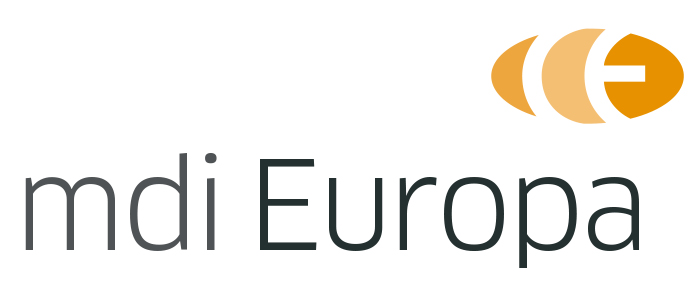Following the acceptance of the European Commission proposal for an extension of transition timelines for legacy devices and a removal of the MDR and IVDR sell-off period, the new provisions were published in the Official Journal of the EU on March 20, 2023. The proposal is now officially adopted.
We have summarized the most important points and conditions below again.
Legacy devices with an MDD/ AIMDD notified body certificate
For manufacturers of legacy devices with an MDD/ AIMDD notified body certificate, there are certain eligibility criteria to make use of the extended transition period, i.e. the certificate must have been valid by the date of adoption of the proposal. If this is not the case and the certificate expired before the adoption date, one of the following conditions must be fulfilled:
(a) before the date of expiry of the certificate, the manufacturer and a notified body have signed a written agreement in accordance with Section 4.3, second subparagraph, of Annex VII (MDR) for the conformity assessment in respect of the device covered by the expired certificate or in respect of a device intended to substitute that device;
(b) a competent authority of a Member State has granted a derogation from the applicable conformity assessment procedure in accordance with Article 59(1) (MDR) or has required the manufacturer, in accordance with Article 97(1) (MDR), to carry out the applicable conformity assessment procedure’.
Legacy devices without an MDD/ AIMDD notified body certificate
For manufacturers of class I legacy devices who require notified body involvement due to changed classification rules under the MDR and thus do not have an MDD/ AIMDD notified body certificate the aforementioned eligibility criteria do not apply.
General conditions for legacy devices
The proposal also provides some conditions that must be generally fulfilled by manufacturers of legacy devices to make use of the new timelines. Please find below the most important points:
(a) devices continue to comply with Directive 90/385/EEC or Directive 93/42/EEC, as applicable;
(b) there are no significant changes in the design and intended purpose;
(c) devices do not present an unacceptable risk to the health or safety of patients, users or other persons, or to other aspects of the protection of public health;
(d) no later than 26 May 2024, the manufacturer has put in place a quality management system in accordance with Article 10(9);
(e) no later than 26 May 2024, the manufacturer, or an authorised representative, has lodged a formal application in accordance with Section 4.3, first subparagraph, of Annex VII (MDR) for conformity assessment in respect of a device that is eligible to make use of the extended transition period or in respect of a device intended to substitute that device, and no later than 26 September 2024 the notified body and the manufacturer have signed a written agreement in accordance with Section 4.3, second subparagraph, of Annex VII (MDR).
Please note that still in parallel, manufacturers of legacy devices must already comply with the MDR requirements on PMS, vigilance, registration and market surveillance.
New transition timelines
If the aforementioned conditions are fulfilled, the corresponding manufacturers may make use of extended transition timelines:
- 31 December 2027, for class III devices and for class IIb implantable devices, except sutures, staples, dental fillings, dental braces, tooth crowns, screws, wedges, plates, wires, pins, clips and connectors;
- 31 December 2028, for class IIb devices other than those covered by point (a) above, for class IIa devices, and for class I devices placed on the market in sterile condition or having a measuring function;
- 31 December 2028, for class I devices that need notified body involvement due to amended MDR classification rules (e.g. reusable surgical instruments).
Sell-off period removed for MDR and IVDR legacy devices
As a final point, the proposal suggests to suspend the sell-off period for both Regulations. Originally, the MDR and IVDR required devices that have already been placed on the market before the date of application of the Regulations or for legacy devices that have been placed on the market within the defined transition periods to be made available or put into service until May 27, 2025.
This deadline has now been suspended. In simplified words, this means that devices that have been sent to a distributor’s warehouse in Europe can be sold off to end clients without any time limitation – provided they have been shipped before the MDR or IVDR application date or in accordance with the MDR and IVDR transition timelines respectively.
General considerations
Manufacturers should not understand the proposal as an opportunity to delay the MDR transition. Considering the requirements to make use of the extended transition period, it becomes clear that this will only apply for manufacturers who have well proceeded with their MDR transition process.
Furthermore, it is not yet entirely clear how exactly the fulfillment of the corresponding requirements is verified and who will be responsible for this. Currently, confirmatory letters issued by the notified body are being discussed.
Assistance
The MDR and associated dates of implementation grow increasingly complex. Should you need assistance in understanding the extended transition timelines and if they apply to you and what to do, please get in touch. We are also waiting for a Q&A document shortly that will hopefully provide practical advice.
Editor’s note: In our previous article we said that legacy devices must fulfill both conditions as described in points a and b (paragraph 5 and 6 of this article). Please note that only one of the conditions must be fulfilled.
Source: European Commission, Medtech Insight (an Informa product)
Accompanying this subject we recommend the following content on our website
Browse mdi-europa.com by tag “Legacy Devices“.





